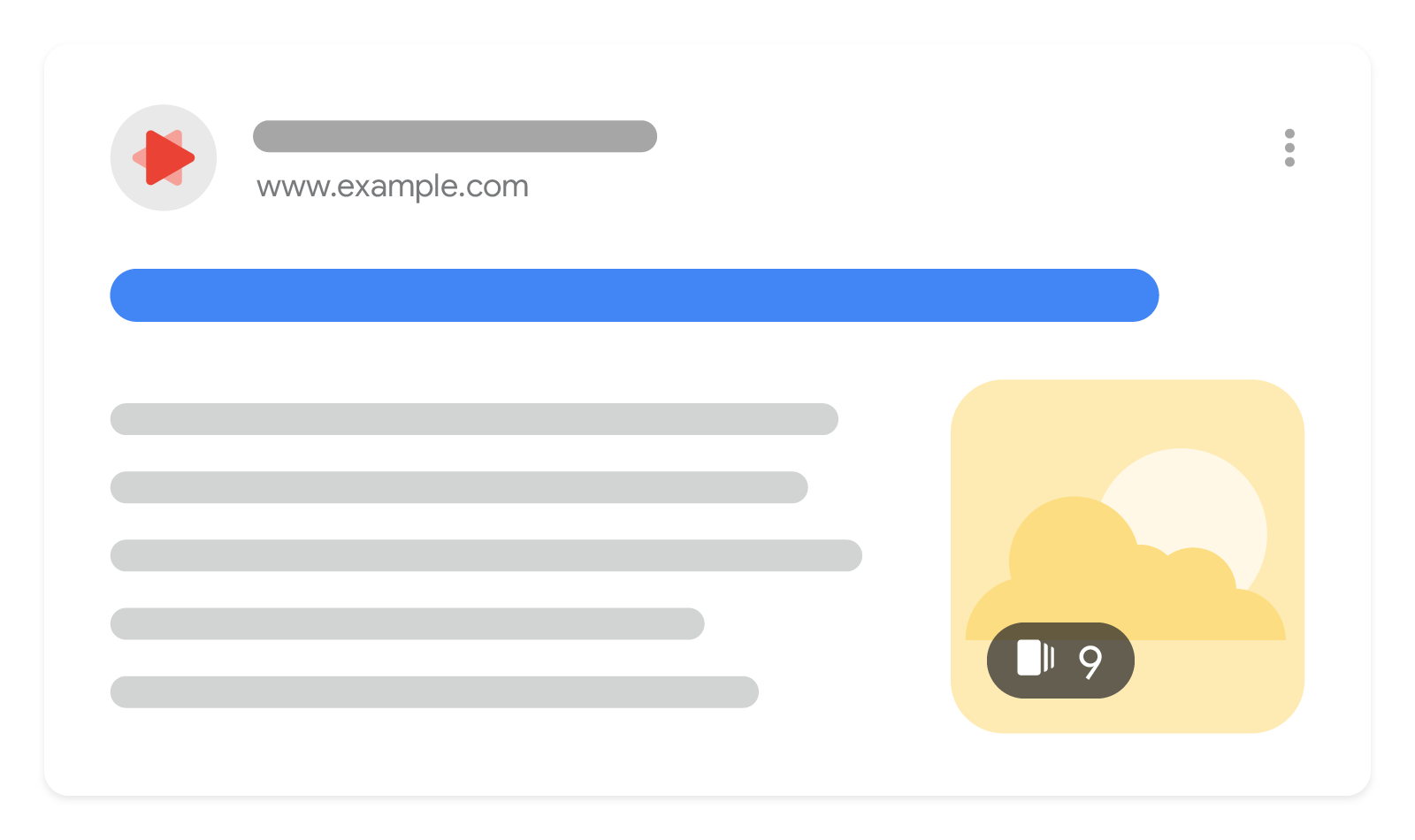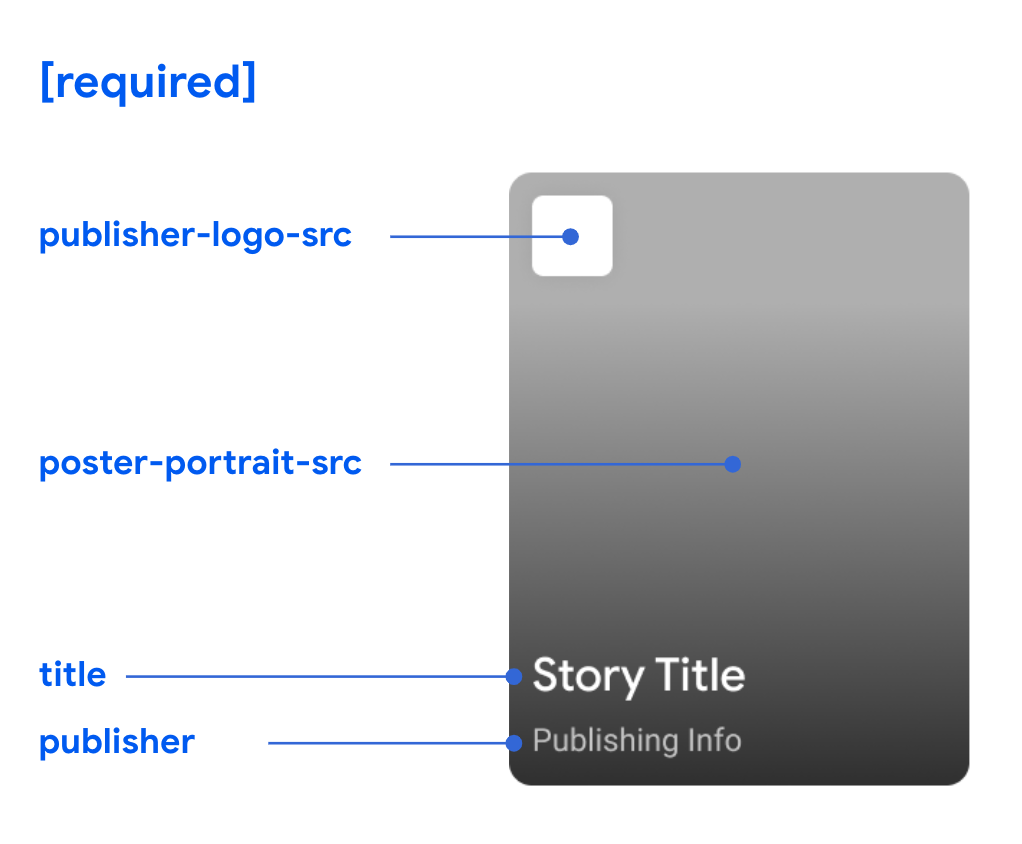تفعيل "قصص الويب" على Google

"قصص الويب" هي نسخة مستندة إلى الويب من تنسيق "القصص" الرائج الذي يدمج الفيديو والصوت والصور والصور المتحركة والنص لمنح المستخدم تجربة ديناميكية. يتيح لك هذا التنسيق المرئي استكشاف المحتوى بالسرعة التي تناسبك من خلال النقر أو التمرير سريعًا للتنقّل بين أجزاء المحتوى المختلفة.
يشرح هذا الدليل كيفية جعل "قصص الويب" مؤهلةً للظهور على "بحث Google" (بما في ذلك ميزة اقتراحات).
في ما يلي نظرة عامة حول كيفية تفعيل "قصص الويب" على Google:
- أنشِئ "قصة الويب".
- تأكّد من أنّ "قصة الويب" هي صفحة AMP صالحة.
- تحقّق من البيانات الوصفية.
- تأكّد من فهرسة "قصة الويب".
- اتّبِع سياسات المحتوى الخاصة بـ "قصص الويب".
مدى توفّر الميزة
يمكن أن تظهر "قصص الويب" كنتيجة منفردة على "بحث Google"، وهي متاحة في جميع المناطق التي يتوفر فيها "بحث Google" وبلغات مختلفة.
يمكن أن تظهر "قصص الويب" في خلاصة "اقتراحات" كبطاقة منفردة يمكن النقر عليها من خلال القصة. تتوفّر طريقة العرض هذه في جميع المناطق التي تتوفّر فيها ميزة "اقتراحات من Google" وبلغات مختلفة، ولكن يُرجَّح ظهورها بشكل أكبر في الولايات المتحدة والهند والبرازيل.
إنشاء "قصة الويب"
"قصص الويب" هي في الأساس صفحات ويب، ويجب أن تخضع للإرشادات وأفضل الممارسات نفسها التي تنطبق على نشر صفحات الويب العادية. هناك طريقتان للبدء:
- يمكنك اختيار إحدى أدوات تحرير القصص للبدء بإنشاء قصص بدون إضافة أي ترميز.
- إذا كانت لديك موارد هندسية، يمكنك البدء باستخدام AMP. لضمان عرض "قصة الويب" بشكل صحيح، نقترح استخدام أدوات مطوّري برامج Chrome لمحاكاة أحجام الأجهزة وتنسيقاتها المختلفة.
لضمان سير الإجراءات بسلاسة، يُرجى مراجعة أفضل الممارسات لإنشاء "قصص الويب".
التأكد من أنّ "قصة الويب" هي صفحة AMP صالحة
بعد الانتهاء من إنشاء القصة، تأكّد من أنّ "قصة الويب" هي صفحة AMP صالحة. ويُعدّ "سجلّ AMP" صالحًا إذا كان متوافقًا مع مواصفات AMP المختلفة. ويتيح ذلك عرض "قصة الويب" عبر "ذاكرة التخزين المؤقت لصفحات AMP"، ما يضمن جودة الأداء ويوفّر التجربة الأفضل للمستخدمين. يمكنك استخدام الأدوات التالية للتأكّد من أنّ "قصة الويب" هي صفحة AMP صالحة:
- أداة اختبار "قصص الويب" على Google: للتأكّد من أنّ "قصة الويب" صالحة
- أداة فحص عنوان URL: للتأكّد من أنّ "قصة الويب" هي صفحة AMP صالحة والتحقّق من حالة فهرسة Google لعنوان URL
- AMP Linter: لمعاينة "قصص الويب" أثناء إنشائها من خلال سطر الأوامر والتأكد من أنّها صالحة
التأكّد من صحة البيانات الوصفية
لكي تكون "قصص الويب" مؤهّلة للظهور في "بحث Google" أو تجارب "اقتراحات من Google"، قدِّم البيانات الوصفية الضرورية لعرض "قصة الويب" في المعاينة.
- راجِع القائمة الكاملة للبيانات الوصفية.
- تحقَّق من ظهور معاينة "قصة الويب" بشكل صحيح في أداة اختبار "قصص الويب" من Google.
تذكّر أنّه يجب إدراج الحقول التالية في كل "قصة ويب": publisher-logo-src وposter-portrait-src وtitle وpublisher.

التأكّد من فهرسة "قصة الويب"
تحقَّق ممّا إذا كان محرك بحث Google قد فهرس "قصة الويب". واستخدِم أداة فحص عنوان URL لإرسال عناوين URL الفردية أو حالة المراجعة باستخدام تقرير "فهرسة الصفحات" أو تقرير "Sitemaps". إذا كانت "قصة الويب" غير مفهرسة:
- لتسهيل عثور محرّك بحث Google على "قصة الويب"، يمكنك إنشاء رابط يؤدي إلى "قصص الويب" من موقعك الإلكتروني أو إضافة عنوان URL الخاص بـ "قصة الويب" إلى خريطة الموقع.
- يجب أن تكون جميع "قصص الويب" أساسية. وتأكَّد من أنّ كل "قصة ويب" تتضمّن
link rel="canonical"يؤدي إليها. على سبيل المثال:<link rel="canonical" href="https://www.example.com/url/to/webstory.html"> - تأكّد من أنّ عنوان URL الخاص بـ "قصة الويب" غير محظور على Googlebot من خلال ملف robot.txt أو علامة
noindex.
